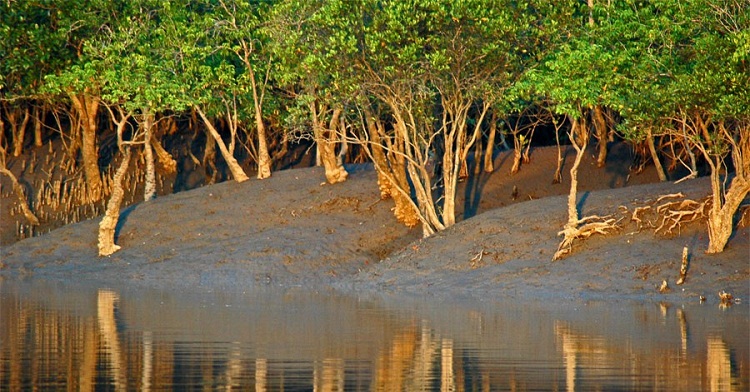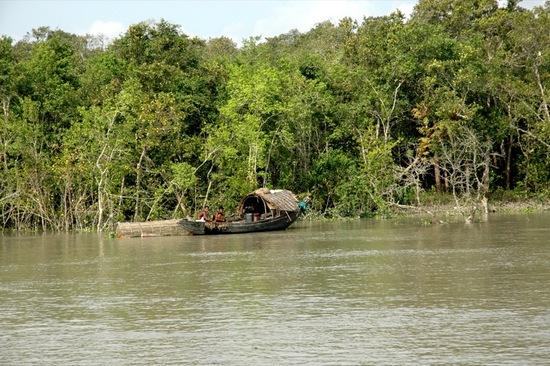
Sunderbans

Sunderban – the river nirvana
At the tip of the Ganges is a mystic mangrove forest on myriad of islands.
Impenetrable mangrove forests, winding rivers, lush Sundari trees, water changing its colour at every creek from muddy rivers to emerald blue sea, narrow creeks to several miles wide rivers where the man and man eaters eat fish to survive, crabs climb the trees, tigers swim long distances and mighty crocodiles bask in the sun.
The Sunderbans, a biosphere reserve and a UNESCO world heritage site, is the largest forest delta in the world with almost 9630 sq km in India and Bangladesh with almost 8 rivers – the notable ones are the Ganga and the Brahmaputra, coming together before entering the Bay of Bengal.
This is wonderful and to be explored through waterways only. From the north to the south east to west, the cruise transverses the entire area enchoring at the most exotic waters.
About Sunderbans
The Beach
The journet begins at Kolkata to the land of mangroves, the Sunderbans. This is where the Ganges enters the sea. A vast pristine coastline frames the entire Sunderbans. Most of it is un habited and unexplored. The western part of Sunderbans is the sea route to the ships calling at the Port of Kolkata.
Birding in the Tiger Land
To quote from ‘The Sunderbans, Inheritance’ by Bittu Sahgal, Sumit Sen and Bikram Grewal (noted wild life enthusiast and conservationists) – “if it were not so totally identified with tigers, the Sunderbans would get pride of place as one of the world’s most satisfying Birding destinations”. About 200 species are spotted here. Masked Finfoot, Eurasian Curlews, Whimbrels, Pacific Golden Plovers, Terek Sandpipers, Lasser Adjutant, Changeable Hawk Eagle, and 8 species of Kingfishers, Mangrove Pitta, Greater thick Knee Woodpeckers , Goliath Herons to name a few. Season wise birding details have been documented. Some rare and some that have come several flying thousands of miles to make Sunderbans their home for a few days.
The Fishing Village
Fishing and honey collection are the major means of livelihood. At every bend dinghies to big fishing boats are sights not to be missed. Namkhana is the major fishing harbour and most of the boats come here to unload their catch. Nets being thrown in and women wading through the water to collect prawn seeds are common sights in Sunderbans.
Wilderness Abound
The serenity and tranquillity of the forests is most alluring. Thick mangrove swamps coupled with the tidal effect makes the region much more interesting for wildlife. There is a saying in Bangali – “Joley Kumir, Dangai Bagh”, meaning tigers on land and crocs in the water. Wildlife safari is very different from other forests. The cruise through the dense narrow creeks itself is a safari in Sunderbans with visits to watch towers as ingress into the swamps is almost difficult. Although the Royal Bengal is what Sunderbans is known for, is the most elusive and difficult to sight. Be it the Tigers, Crocs, Dog Sharks, Fishing Cats, Irrawaddy Dolphins, Leopard Cat, wild boar, Chital, or otters all are expert swimmers.
